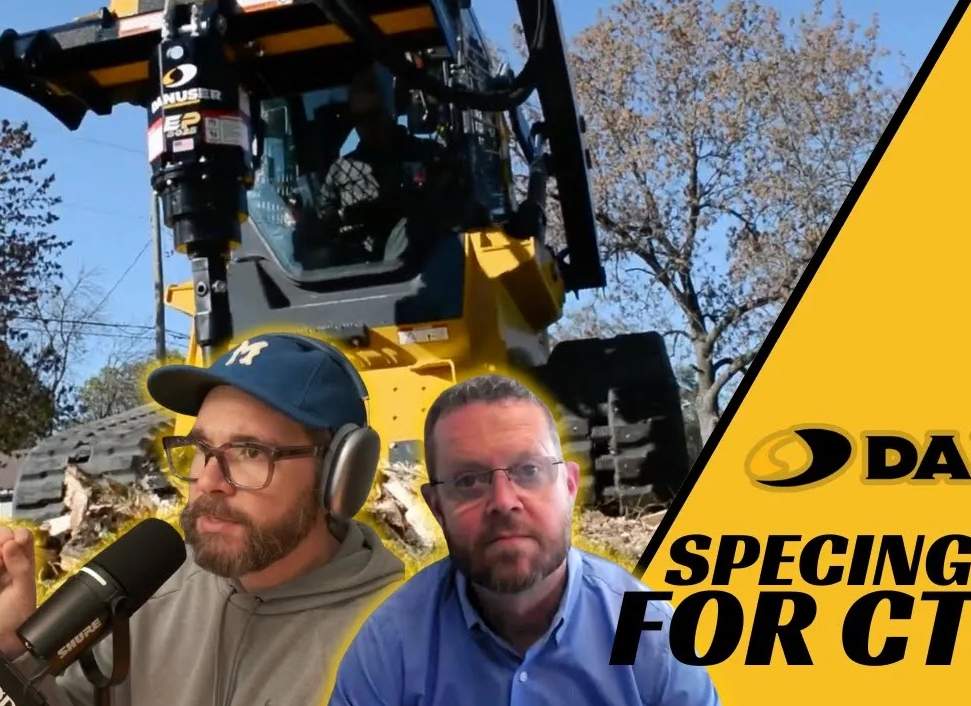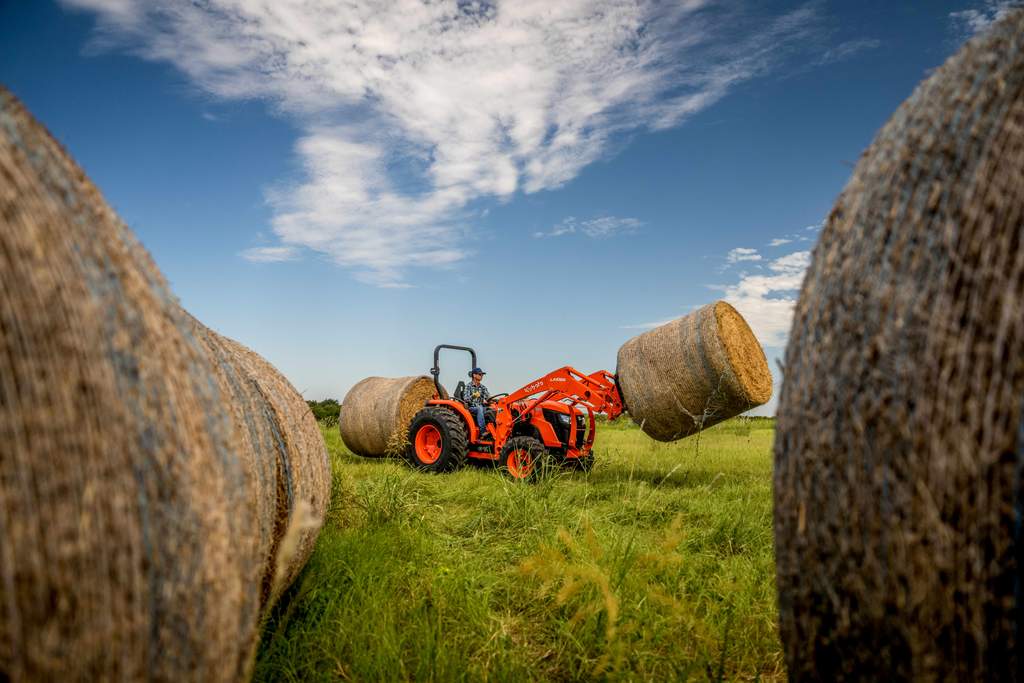Trench Warfare: Are You Equipped with the Proper Skid Steer/Track Loader Trencher Attachment?

Long gone are the days of trenching by hand — something our backs are all happy about. Thanks to trencher attachments, the laborious task of digging a trench has been transformed. Trenching attachments available on the market today are numerous, covering a range of applications from laying utility lines to helping improve drainage, and the features are endless.
Not doing the groundwork — pun intended — can be costly. It’s vital to understand all the variable factors before undertaking any trenching work. What are the digging conditions like? Are there potential safety hazards to consider? What machine(s) will it be working with? These are all fundamental to getting the job done with maximum efficiency.
But identifying the right trencher for your job is only part of the equation. Once you decide which trencher you’re going to rent or buy, how can you be sure you’re using it to its maximum potential? Being clear on best practices will help you eliminate issues, reduce risks and maximize the effectiveness of your trenching operation. We’ll discuss all of this.
The Right Tool for the Job
Whether you’re trenching for construction, laying cables, installing drainage systems, farming or landscaping, understanding all aspects of what is required is key to success. Most manufacturers supply trenching attachments with a number of specifications that can be customized to suit an application’s needs. Many factors come into play.
Depth and Width
Determining the depth and width of the trench required is the first step in sizing the trencher attachment. Trencher attachments often come with the ability to dig a range of different depths. Getting the depth right for the trench in question is of paramount importance, so a feature that allows you to verify your dig depth is beneficial. Using something like a precision depth control skid plate and making certain it’s flush with ground level will ensure the required and accurate depth for your trenching job.
Most manufacturers supply trenching attachments with chain widths from approximately 6 to 14 in., allowing you to dig various depths. Typically, as the chain width increases, the allowable dig depth decreases. This is a good point to remind you that we’re discussing trenching attachments here. For trenching a significant depth and width, or if your job is to solely dig trenches, then a designated trenching machine may be a better fit.
Ground Conditions
Matching the right trencher to the ground conditions in question is essential to keeping costs down, preventing technical problems, guaranteeing maximum productivity and efficient movement through the ground. Using a machine too small for the workload will limit production and cause unnecessary wear on the attachment. A trencher too large for a job may not be able to operate in limited space.

Teeth
Ground conditions help determine the type of teeth best suited to your application. Many manufacturers give multiple options on choice of teeth, usually tungsten for tougher ground conditions and earth teeth for softer ground. Some even offer the added feature of interspersing the earth teeth with paddle-shaped teeth, which helps to remove spoil from the trench, giving the clean finish you want to deliver to your customer.
Parent Machines
The trencher attachment must be correctly matched to the parent machine. It is fundamental to match the auxiliary hydraulic flow of the machine to the trencher attachment. This will result in the most efficient trenching for the ground conditions at hand. Some manufacturers supply attachments that can be used on both skid steers and excavators with no amending of the trencher unit, providing a flexible solution for the operator. Although manufacturers have made the attachment process straight forward for a single operator, operator instructions should always be followed for attaching the trencher attachment to the parent machine.
Motor
The motor needs to be configured correctly, balancing the speed and the torque. If too much speed is allowed, the chain will flail and spoil will spray around the area. With too much torque, the chain will not move quickly enough, leaving spoil in the bottom of the trench.
A Clean Trench
A neat feature available on some trencher attachments is the trench clearer or scooper. This sits on the end of the danger bar and once the boom is lowered, the scooper is dropped into the trench to scoop away the spoil, giving a definite finish.
Safety, Safety, Safety
Before commencing trenching work, undertake all safety checks, site surveys, hazard recognition and risk assessments on the site where you’ll be working. Make sure you’re wearing all of the appropriate safety gear like goggles, high-vis, appropriate shoes, gloves, etc. Also, be sure to call 811 before you dig.
Follow all safety precautions outlined in the operator’s manuals of the attachment and parent machine. Check the equipment (trencher attachment and parent machine), ensuring that all parts and systems are in good operational working order and not showing any signs of wear. If in doubt, diagnostic equipment and professional advice should always be considered before carrying out any work.
 Let the Trenching Begin
Let the Trenching Begin
If all pre-trenching aspects have been considered and carefully put in place (don’t forget to call 811 before you dig!), the trencher will cut at the optimal angle and maintain the correct depth. Pulling the trench should be as easy as creeping the machine in reverse at a steady pace.
When trenching, it is important to have the trencher chain properly adjusted. If the chain is too loose or too tight, it will lead to inefficient trenching. This is critical to the efficiency and effectiveness of the trenching. As the operator tracks back, it’s crucial that the trencher is held at a constant angle, keeping the skid plate flush to the ground.
Once this is all considered, the trenching job should be accurate, smooth and efficient. Once finished, it’s important the attachment has a mount that keeps the trencher stable, allowing for easy pickup when starting again.
Equipment Maintenance
Long-term trencher performance is dependent on how well it is maintained. A trencher must be in good operating condition when it arrives at the job location and then requires regular maintenance to be performed after a day’s work is finished or before the machine is operated again.
Primary wear parts on any chain-type trencher are the digging teeth, digging chain and sprockets. Operating a trencher with worn or damaged teeth, chain or sprockets reduces digging efficiency and places extra stress on the machine, causing unnecessary wear and possible damage to the machine itself.
All fluids and filters should be changed at prescribed intervals, more frequently when operating in adverse or dusty conditions. Lubricate all service points and maintain the hydraulic system at manufacturer-prescribed intervals. Adjust chain or belt drives as necessary and replace all guards and shields after maintenance procedures are complete.
Conclusion
There are many variables to consider when purchasing or renting a trencher to ensure the most efficient performance. Make no mistake — it’s a complex piece of equipment. Used correctly, with the right specifications for the job at hand, a trencher attachment will do the job you need it to do perfectly.
Also remember there are many specialty suppliers of attachments in today’s market. The key is working with one that understands your needs and can support you technically to get the job done.
Andrew Forrest is a technical sales representative for Auger Torque USA.




